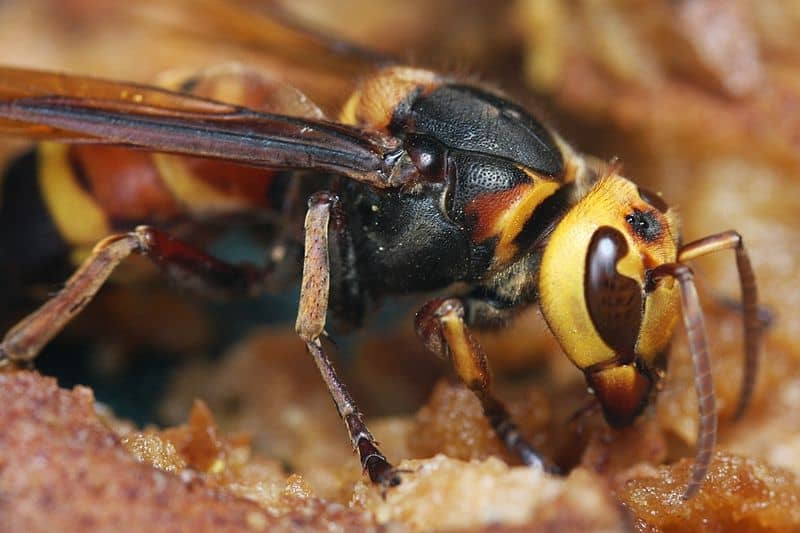Asian Giant Hornet Facts
- Most notably, the term Asian Giant Hornet includes the subspecies of Japanese giant hornet. This serves as the common name for the Vespa mandarinia. It also forms the largest known hornet on earth.
- The amazing insect also remains colloquially popular as the yak-killer hornet in some regions. But, people often mistake it for a related species that now represents an invasive species in parts of Europe.
- In addition, entomologists currently recognize three distinct subspecies. Further adding to the frequent confusion, each of these inhabits the same general region of the world as the Asian Giant Hornet.
Related Articles
Asian Giant Hornet Physical Description
Firstly, the incredible Asian Giant Hornet truly lives up to its common name. That’s because queens of the species attain an average body length of about 2 in (5 cm). However, workers rarely exceed 1.6 in (4 cm).
Furthermore, it achieves a wingspan that averages about 3 in (7.6 cm). Additionally, its stinger usually reaches an astounding 0.25 in (6 mm) in length. With this, it also injects copious amounts of potent venom.
The head of the arthropod appears orange and quite wide in comparison to other hornet species. Also, the compound eyes and ocelli show dark brown. But the antennae present dark brown with orange scapes.
- Kingdom: Animalia
- Phylum: Arthropoda
- Class: Insecta
- Order: Hymenoptera
- Family: Vespidae
- Genus: Vespa
- Species: V. mandarinia
Asian Giant Hornet Distribution, Habitat, and Ecology
First of all, the breathtaking Asian Giant Hornet actually inhabits a comparatively large territory. This range consists of select portions of eastern Asia. Often, though, many people believe it exists elsewhere, due to confusing it with other species.
Further, it only inhabits certain areas. However, it seems to be most common in rural areas of Japan. There, it also has become popular as the giant sparrow bee. Even there, however, it typically appears in rural areas.
Yet, it also appears in other sections of the region. This mainly includes the Primorsky Krai region of several countries. Furthermore, these include Russia, Korea, China, Taiwan, Indochina, Nepal, India, and Sri Lanka.
But, in whatever area it appears, it has a specific habitat preference. This consists of both lowland forests and low mountain foothills. In addition, unlike most similar creatures, it builds its nest underground.
Species Sharing Its Range
Check out our other articles on 5 Rare Mind-Blowing Cloud Types, Ocelot, Mount Erebus, Budwing Mantis, Spider Tailed Viper, Mountain Chicken, Bee Hummingbird, Mycena Chlorophos

